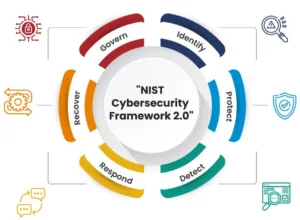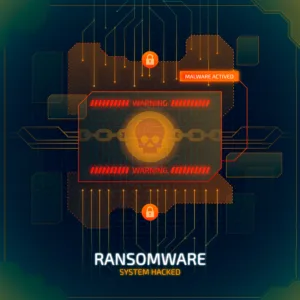
Table of Contents
In the ever-evolving landscape of cybersecurity threats, a new player has emerged, wreaking havoc and causing distress among individuals and organizations alike. Meet Kasseika ransomware, a sophisticated malware strain that not only encrypts your files but also employs a cunning strategy by utilizing antivirus drivers to disable competing security solutions.
In this blog, we will delve into the intricacies of Kasseika ransomware, its modus operandi, and most importantly, how to shield yourself against this insidious threat.
The Rise of Kasseika Ransomware
In recent times, Kasseika ransomware has gained notoriety for its advanced capabilities and evasive techniques. This malware is part of a growing trend where cybercriminals continuously refine their methods to bypass traditional security measures.
Unlike its predecessors, Kasseika doesn’t settle for encrypting files alone; it goes a step further by targeting the very defenses put in place to safeguard systems—antivirus software.
The Antivirus Conundrum
One of the standout features of Kasseika ransomware is its ability to manipulate antivirus drivers, the core components responsible for the proper functioning of antivirus programs. By infiltrating and exploiting these drivers, Kasseika can effectively neutralize other security software on the system, leaving the victim exposed and defenseless.
The modus operandi involves Kasseika injecting malicious code into the antivirus drivers, essentially turning them against their own purpose. The ransomware intelligently detects the presence of rival security solutions and utilizes the compromised drivers to disable or deactivate them, creating a vacuum in the defense mechanisms of the infected system.
The Consequences of a Compromised Antivirus
Once Kasseika successfully disables competing antivirus software, it gains unhindered access to the system, paving the way for its primary objective—encrypting files and demanding a ransom for their release. The consequences of a compromised antivirus are severe, as it not only fails to detect the ransomware but also leaves the system vulnerable to additional threats.
Beyond the immediate financial implications of paying the ransom, there’s the broader issue of data integrity, privacy breaches, and potential long-term damage to the affected individual or organization’s reputation. Kasseika ransomware operates with ruthless efficiency, exploiting weaknesses in cybersecurity infrastructure to maximize its impact.
Protecting Against Kasseika Ransomware
Understanding the threat posed by Kasseika is the first step towards safeguarding your digital assets. While no system can be completely immune, implementing robust cybersecurity measures can significantly reduce the risk of falling victim to this ransomware.
Here are some practical steps to protect against Kasseika and similar threats:
1. Regular Backups:
– Ensure that your critical data is regularly backed up to an external and secure location.
– Automated backup solutions can help in maintaining up-to-date copies of your files, minimizing the impact of a ransomware attack.
2. Multi-Layered Security:
– Adopt a multi-layered security approach with a combination of antivirus software, firewalls, and intrusion detection systems.
– Regularly update and patch all security software to address vulnerabilities that could be exploited by ransomware.
3. Employee Training:
– Educate employees about the dangers of phishing emails and the importance of not clicking on suspicious links or downloading attachments from unknown sources.
– Human error is often the entry point for ransomware; awareness can be a powerful defense.
4. Network Segmentation:
– Implement network segmentation to restrict lateral movement within the network.
– Isolate sensitive systems and data, preventing the rapid spread of ransomware in the event of a successful infiltration.
5. Behavioral Analysis:
– Utilize advanced threat detection solutions that employ behavioral analysis to identify and stop ransomware before it can execute its malicious activities.
6. Regular Updates:
– Operating system and software’s must be updated with the latest security patches.
– Cybercriminals regularly exploit vulnerabilities in outdated software to launch attacks.
7. Incident Response Plan:
– Develop and regularly update an incident response plan to ensure a swift and organized response in the event of a ransomware attack.
– Regular drills can help familiarize the team with the procedures and improve response times.
Conclusion
In the face of evolving cyber threats like Kasseika ransomware, staying vigilant and proactive is crucial. The landscape of cybersecurity is dynamic, and cybercriminals are relentless in their pursuit of new ways to exploit vulnerabilities.
By adopting a comprehensive cybersecurity strategy that includes regular backups, employee training, and the latest security solutions, individuals and organizations can fortify their defenses against Kasseika and other emerging threats.
The battle against ransomware requires a collective effort, and with informed practices, we can strengthen our digital resilience in the face of adversity.
Read more on https://cybertechworld.co.in for insightful cybersecurity related content.




















Your knowledge and expertise on various topics never ceases to amaze me I always learn something new with each post
Thank you for your shening. I am worried that I lack creative ideas. It is your enticle that makes me full of hope. Thank you. But, I have a question, can you help me?